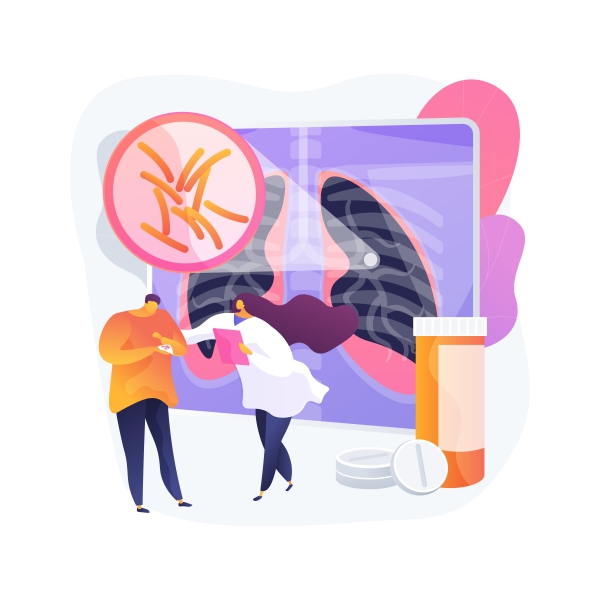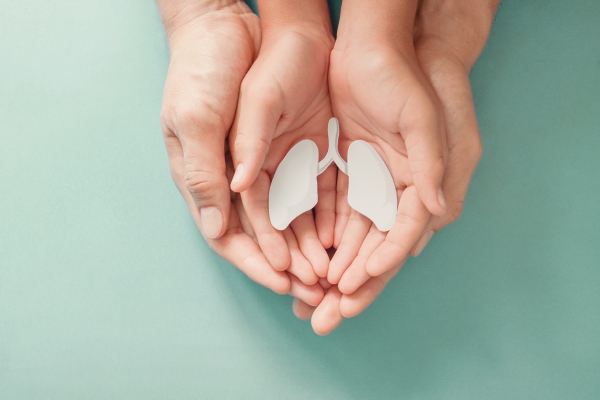What is Tuberculosis?
Tuberculosis is an infectious disease that can affect different organs in the body and can be very serious. It mainly affects the lungs but can present with a variety of signs and symptoms. It is the most common infectious disease leading to death across the world. Even if the number of people with tuberculosis is decreasing in the United States, it is increasing in other parts of the world and is of great concern. Furthermore, the pathogen causing the disease is becoming more and more resistant to the available treatments.
The World Health Organisation (WHO) estimated that there were around 2 billion people with the latent form of the disease worldwide. This means that the person has the infection but is not presenting with signs or symptoms. Globally, the disease caused the death of around 1.7 million people in 2009.
The emergence of tuberculosis and its associated resistance to medications are mainly a result from the co-infection with human immunodeficiency virus (HIV).
Causes of Tuberculosis
Tuberculosis is caused by a bacterium called Mycobacterium Tuberculosis. Humans are the only known carriers of the organism and it spreads mostly through airborne droplets when someone in the active phase of the infection coughs, spits or sneezes.
If the person who catches the bacterium is healthy and has a normally functioning immune system, he/she will end up with latent/dormant tuberculosis. Only around 5% of those individuals can present with signs and symptoms later. If ever a person with latent tuberculosis has a decrease in his/her immune system, the bacteria can reactivate and cause disease.

Mycobacterium Tuberculosis has the ability to stay and grow in certain cells in the human body. Therefore, it can spread through blood and invade other structures such as the bone marrow, liver, spleen, kidneys and brain.
Infants, old people and other people with a weak immune system cannot contain the disease into the latent form. In these individuals, the disease spreads rapidly to different parts of the body.
With time, some strains of tuberculosis have become resistant to the antibiotics that were made several years ago. This gives the bacterium the ability to survive despite the administration of treatment.
Risk factors
There are certain factors that determines whether the infection is likely to be transmitted. These are:
- How many organisms have been expelled by the infected individual
- How long has a person been exposed to contaminated air
- Whether the person breathing in the contaminated air has a strong or weak immune system
Other factors that puts you more at risk of getting infected with tuberculosis include:
- Living in crowded and closed environment along with infected persons
- Being a healthcare worker taking care of infected patients
- Being a nursing home resident
- Being in prison
- Having HIV infection
- Being an intravenous drug abuser
- Taking immunosuppressive therapy
- Smoking
- Having a low body weight
- Being very young or old
- Travelling to at risk countries specially Africa and Asia

Signs and symptoms
Active tuberculosis present classically with the following signs and symptoms:
- Cough
- Loss of weight
- Loss of appetite
- Fever
- Coughing up blood
- Night sweats
- Pain in the chest
- Decreased energy
If the infection spreads to the brain you may experience the following:
- Intermittent or constant headache
- Changes in the brain function such as confusion, memory loss or disorientation
- Low grade or no fever
On the other hand, if the infection reaches your bones you may present with:
- Back pain
- Stiff back
- Inability to move your lower extremities
- Joint pain
Tuberculosis of the genitourinary system leads to:
- Painful urination
- Frequent urination
- Pain in the flank
- Enlarged scrotum
- Inflammation of the prostate
- Inflammation of the testicles
Spread of tuberculosis to the gastrointestinal tract presents with the following symptoms:
- Non healing ulcers in the mouth or around the anus
- Difficulty to swallow
- Abdominal pain
- Blood in stools


Making a diagnosis
After taking a detailed history from you, your doctor will perform a physical examination during which he/she will be looking for signs of tuberculosis. He/she will listen over your lungs using a stethoscope to listen for the sounds made by your lungs.
There are several tests done to diagnose tuberculosis including:
- Mantoux tuberculin test with purified protein derivative (PPD): This is the primary method for diagnosing and screening for tuberculosis. In this test, a small amount of PPD is injected under your skin on your forearm. After several hours, the injection site will be checked for any changes and interpreted accordingly.
- Blood tests: These tests assess how your body is reacting to the bacteria.
- Imaging: A chest X-ray or a CT scan can be requested to look for the presence of infection in the lungs.
- Sputum tests: A sample of your sputum is collected and sent for analysis. This can also help your doctor to tailor your treatment according to the specific strain of bacterium present.
Treatment of Tuberculosis
The treatment of tuberculosis is a long process and adherence to the treatment is of utmost importance. The most common drugs used for the treatment of tuberculosis are
- Rifampicin
- Isoniazid
 Pyrazinamide
Pyrazinamide- Ethambutol
In patients with non-resistant strain of tuberculosis, the treatment may last for 6 months. If the infection has spread to the brain, the medications should be taken for 12 months.
Choice of treatment will depend on the immune status of the patient, age and strain of tuberculosis identified.
Directly observed therapy is strongly recommended. This involves the supervision by a healthcare professional or family member who observes the infected person swallowing their medication. This increases treatment completion rates worldwide.
Rifampicin can cause disturbances in enzymes produced by the liver. The medication should be stopped if they become too elevated. If you are taking this medication you can also notice that your body secretions such as your urine or tears will become pink.
Even if you are feeling better after a few weeks of treatment, you should not stop taking your medications. It is important to take the full course as some of the bacteria may still be alive even if the symptoms are fading away.
Complications of Tuberculosis
Tuberculosis can progress into a life threatening condition. Some complications of tuberculosis may be due to the involvement of bones, joints, brain, liver, kidney or heart.
Prevention of tuberculosis
There is a vaccine available against tuberculosis. The BCG vaccine is recommended in certain countries as it decreases the risk of spread of the infection in babies or children. Its use however is not recommended in infants in the United States.

Cases can be identified and treated early through screening of healthcare workers, new entrants in a country, homeless, immunocompromised people and through contact tracing which involves identifying close contacts who are at increased risk of infection.
Prognosis
When the treatment is taken carefully till its completion, full resolution is generally expected with very few complications in non-drug resistant tuberculosis. If the disease has spread out of the lungs to other parts of the body, is present in an old person or one with a weak immune system, it generally carries a poor prognosis.

Source:
Parveen, K. and Michael, C., 2017. Kumar & Clark's Clinical Medicine. 9th ed. The Netherlands: ELSEVIER.
Herchline, T., 2020. Tuberculosis (TB).








